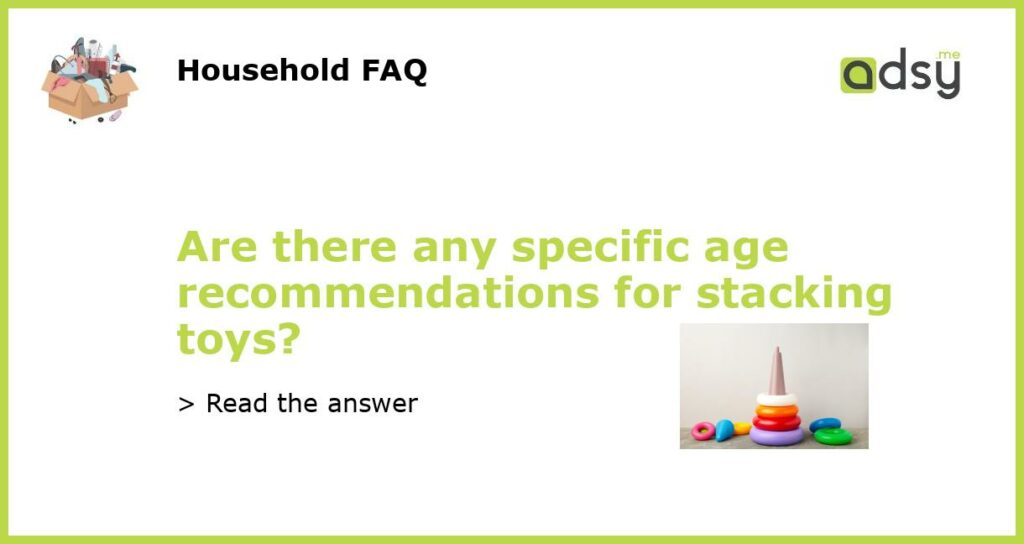When it comes to choosing toys for children, parents often find themselves asking if there are any specific age recommendations for certain types of toys. One popular type of toy that parents may wonder about is stacking toys. Stacking toys, which typically consist of various shapes and sizes that can be stacked on top of each other, can provide children with hours of entertainment and help develop their motor and problem-solving skills. But are there any specific age recommendations for stacking toys? Let’s find out.
The Benefits of Stacking Toys
Before we delve into any age recommendations for stacking toys, let’s explore the benefits of these toys. Stacking toys are not just fun to play with; they also offer numerous educational benefits for children. These benefits include:
- Motor Skills Development: Stacking toys require children to use their fine motor skills to grasp, hold, and stack the various pieces. This helps develop their hand-eye coordination and fine motor control.
- Problem-Solving Skills: As children try to figure out how to stack the pieces in the correct order, they are using their problem-solving skills and critical thinking abilities.
- Creativity and Imagination: Stacking toys allow children to explore their creativity and imagination as they build different structures and designs with the pieces.
- Visual Perception: Playing with stacking toys can also enhance a child’s visual perception as they learn to differentiate between shapes, sizes, and colors.
Age Recommendations for Stacking Toys
While there may not be strict age guidelines for stacking toys, manufacturers often include recommended age ranges on their packaging. These recommendations take into account the complexity of the toy, the size of the pieces, and the safety considerations. It’s important for parents to pay attention to these age recommendations and use them as a general guideline.
For younger children under the age of 12 months, stacking toys with larger, chunkier pieces are typically recommended. These toys are designed to be safe for infants who may still be exploring objects with their mouths. Stacking toys for this age group often have bright colors and simple shapes to attract their attention.
As children grow older and their fine motor skills develop, they can progress to stacking toys with smaller, more intricate pieces. These toys may require more precision and coordination to stack, making them suitable for toddlers and preschoolers. Stacking toys for this age group often come in sets with different shapes and sizes to challenge their problem-solving abilities.
It’s important to note that every child develops at their own pace, so the age recommendations for stacking toys are not set in stone. Some children may be ready for more challenging stacking toys earlier, while others may need more time to develop their skills. As a parent, it’s essential to observe your child’s abilities and choose stacking toys that are appropriate for their current developmental stage.
Safety Considerations
When choosing stacking toys for your child, it’s crucial to prioritize their safety. Here are some safety considerations to keep in mind:
- Ensure the stacking toy is made of non-toxic materials and meets safety standards.
- Avoid stacking toys with small pieces that could pose a choking hazard for young children.
- Regularly check the stacking toy for any worn or damaged parts that could potentially be a safety risk.
- Supervise young children while playing with stacking toys to prevent accidents.
Stacking toys can be a valuable addition to a child’s toy collection, providing hours of play and numerous educational benefits. While there may not be strict age recommendations for stacking toys, manufacturers often provide guidelines based on the complexity of the toy and the size of the pieces. Parents should use these recommendations as a general guideline, taking into account their child’s individual development and safety considerations. By choosing age-appropriate stacking toys and ensuring their child’s safety, parents can provide a fun and educational experience for their little ones.






